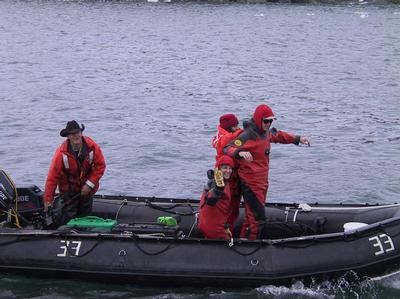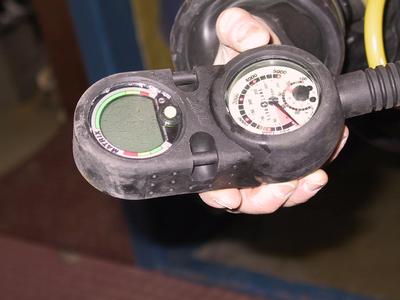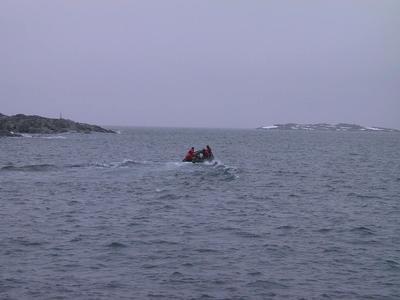21 January, 2002
WHY MAGGIE DIVES
Maggie Amsler studies the chemical ecology of the Antarctic
Peninsula. She measures the growth rate of aquatic plants. One thing she
studies is how underwater plants grow in response to light or to a lack of
light.
She is doing one experiment on the kinds of algae that grow here. (If you
are wondering why algae are important, take a look at the food and other
items in your home. Algae are everywhere!! And, they are very important in
the marine environment.)
Maggie and her team call this experiment the "substrate experiment". A
substrate is an artificial surface placed into the ocean, so that plants or
animals can be attached to it. She and her team have placed 12 concrete
platforms, or substrates, 20 feet deep underwater near an offshore island.
Each of these platforms is a square 40 cm on a side and about 5 cm thick.
It has plastic rods at each of the corners, sticking up about 25 cm from the
substrate. (Here's the math: what is the volume of concrete contained in
each substrate?)

The team has placed algae to the substrate in order to do their experiment. Seven parallel "strings" of braided plastic rope are strung above each platform. The strings have four kinds of algae (2 red and 2 brown algae) attached to them in a specific pattern.
The substrates were placed in the water in groups of three. One substrate in each group has a Plexiglass "sandwich" over it. The " sandwich" is made out of three layers of window screening between two plastic sheets over it. This sandwich cuts out 80 % of the light shining on the plants below it. A second substrate has a single unshaded sheet of Plexiglass over it. The third substrate in each group has no Plexiglass over it.

Most of the members of this team of scientists have already returned to the University of Alabama-Birmingham or to the University of South Florida. Maggie Amsler and Chris Petrie are still here. They will be leaving Palmer Station at the end of January. So they are going out to the substrates now to harvest the algae. Later they will analyze the plants in order to measure their growth in response to the kind of light they lived under.

Jeff Bechtel and Cara Sucher are the "dive tenders" for this algae harvesting trip.

When Maggie Amsler and Chris Petrie are underwater, they use this piece of equipment to keep track of where they are and what they are doing!

Off they go!!
Contact the TEA in the field at
.
If you cannot connect through your browser, copy the
TEA's e-mail address in the "To:" line of
your favorite e-mail package.
|
